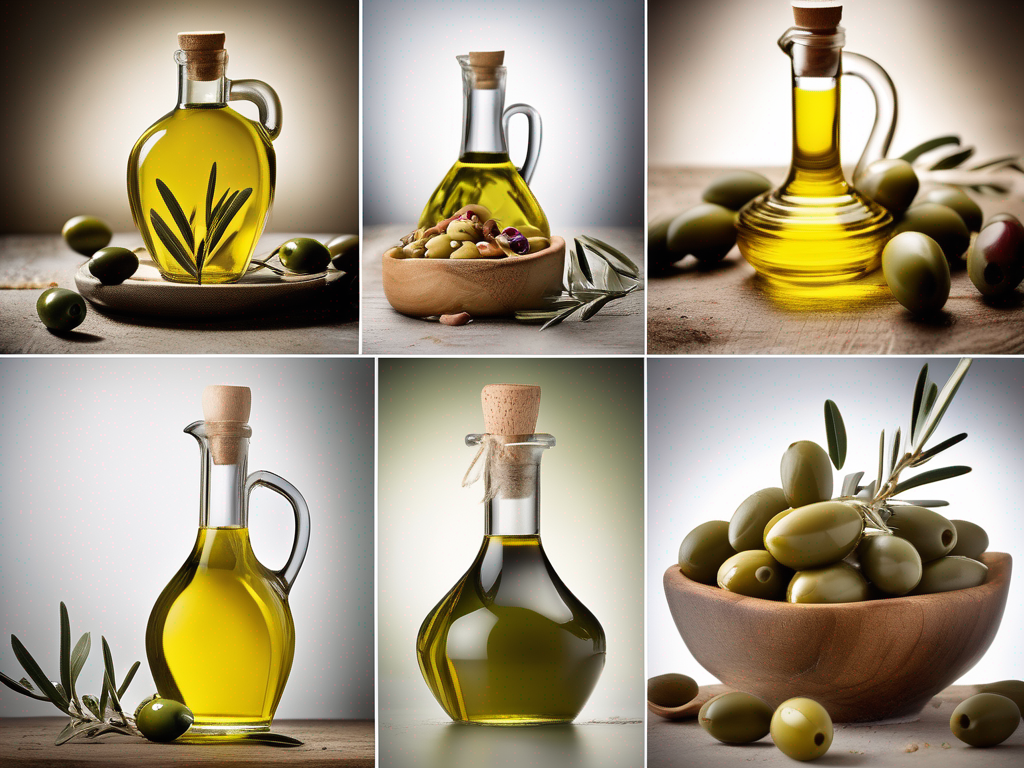
Preserving Olive Oil for Maximum Freshness
Get Your Free Food Safety Cheat Sheet
30 most common foods with instant answers. Print it and stick it on your fridge—completely free!
Preserving Olive Oil for Maximum Freshness
Olive oil is a staple in many kitchens around the world, prized for its rich flavor and numerous health benefits. To ensure you get the most out of your olive oil and maintain its freshness, it's essential to store it properly. In this blog post, we will discuss the best practices for preserving olive oil to maximize its shelf life and quality. (Olive oil)
Understanding Olive Oil
Before delving into preservation methods, it's crucial to understand the characteristics of olive oil. Olive oil is sensitive to light, heat, and oxygen, which can lead to oxidation and rancidity. To maintain its freshness and flavor, olive oil should be stored in a cool, dark place away from direct sunlight and heat sources.
Types of Olive Oil
-
Extra Virgin Olive Oil (EVOO): This is the highest quality and most flavorful type of olive oil, extracted from the first cold pressing of olives. It is best used for drizzling over salads and dishes just before serving.
-
Virgin Olive Oil: Slightly lower in quality compared to EVOO, virgin olive oil is also cold-pressed but has a slightly higher acidity level.
-
Refined Olive Oil: This type of olive oil is processed using heat and chemicals to remove any defects. It has a milder flavor and is suitable for cooking at high temperatures.
Tips for Preserving Olive Oil
1. Choose the Right Container
- Use dark glass bottles or containers to protect olive oil from light exposure.
- Opt for containers with airtight seals to prevent oxidation.
- Avoid storing olive oil in plastic containers, as they can leach chemicals and affect the oil's quality.
2. Store in a Cool, Dark Place
- Keep olive oil away from heat sources such as stoves, ovens, and direct sunlight.
- Ideal storage locations include pantries, cabinets, or dark cupboards.
- Avoid storing olive oil near windows or on countertops exposed to sunlight.
3. Minimize Air Exposure
- When using olive oil, pour out the amount needed and promptly reseal the container.
- Consider transferring olive oil to smaller bottles as you use it up to minimize air exposure.
- Ensure the container is tightly sealed after each use to prevent oxidation.
4. Monitor Temperature
- Olive oil should be stored at a consistent temperature, ideally around 57°F to 70°F (14°C to 21°C).
- Fluctuations in temperature can accelerate the oxidation process and shorten the oil's shelf life.
- Avoid storing olive oil in the refrigerator, as it can cause the oil to solidify and lose its flavor.
5. Check for Signs of Spoilage
- Over time, olive oil may become rancid, indicated by a musty or off-flavor.
- Check the aroma and taste of olive oil periodically to ensure it remains fresh.
- Discard olive oil if it shows signs of spoilage, as consuming rancid oil can be harmful to health.
Conclusion
By following these tips for preserving olive oil, you can prolong its shelf life and maintain its quality and flavor. Remember to store olive oil in a cool, dark place, minimize air exposure, and monitor temperature fluctuations. Regularly check for signs of spoilage to ensure you are using fresh, high-quality olive oil in your culinary creations.
For more information on olive oil and its culinary uses, check out [this link](/food/olive oil). (Olive oil)
Authoritative Food Safety References
These agencies and university labs inform every tip and health precaution we publish.
USDA FoodKeeper – Cold Storage Guidelines
Official refrigerator, freezer, and pantry timelines maintained by the U.S. Department of Agriculture.
Visit USDA FoodKeeperFDA Produce Safety Rule & Grower Guidance
Field-to-fridge handling practices that prevent contamination of fruits, vegetables, and leafy greens.
Visit FDA Produce SafetyCDC Foodborne Illness Prevention Hub
Surveillance-backed guidance on pathogens, symptoms, and steps to reduce foodborne illness risk.
Visit CDC Food SafetyUC Davis Postharvest Technology Center
University research detailing optimal storage atmospheres for produce after harvest.
Visit UC Davis PostharvestPenn State Extension – Home Food Preservation & Safety
Peer-reviewed extension bulletins on safe canning, chilling, and reheating practices.
Visit Penn State ExtensionGet Your Free Food Safety Cheat Sheet
30 most common foods with instant answers. Print it and stick it on your fridge—completely free! Want more? Upgrade to the complete guide with 70+ foods.
Scan your food directly and get instant safety info using our AI-powered camera feature.